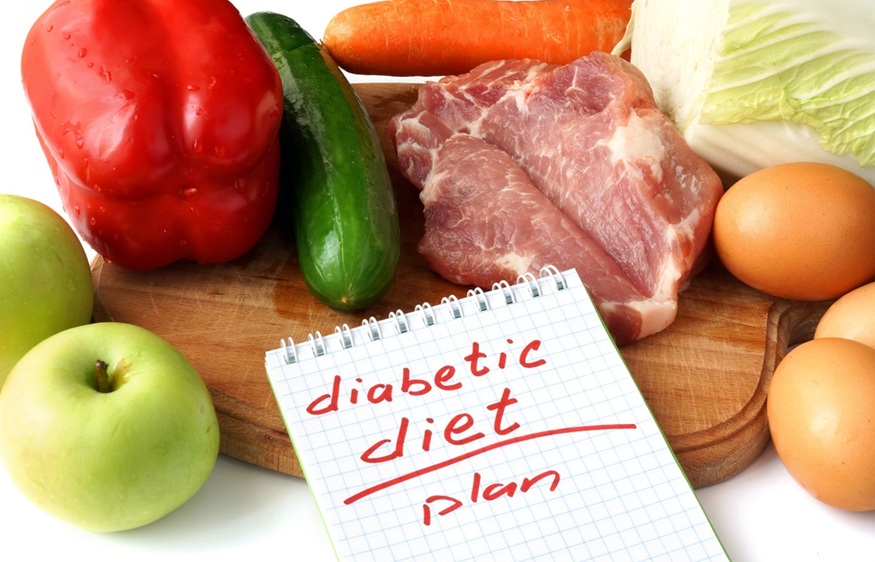Diabetes type 2 is a tangled disorder that’s extremely complicated. There’s not a single factor that triggers this, but there’s also no straightforward solution for treating it.
One thing we do know about for certain, however, is that the condition of diabetes as well as diet are inextricably connected. Every food we eat affects our blood sugar levels, even if just a little off.
If you’re suffering from diabetes, your diet could have a huge impact on the level of blood sugar. This makes deciding on what foods to consume stressful and complicated. Let’s cut through the confusion by understanding the nutritional goals for those with diabetes, and a few practical suggestions on the most nutritious foods to eat like you can add Diabi care Juice in routine life.
“Since a person with diabetes is more prone to experiencing blood sugar highs, the goal of diabetes nutrition therapy is to help give you better control of your blood sugar. “Choosing foods that keep your blood sugar in a safer range, as well as avoiding the ones that don’t, helps reduce your risk of your condition progressing and developing complications.”
Which foods are suitable to enjoy without restriction, and which ones should you stay clear of? Here’s a list of things to consider when you’re trying to alter your diet in order to better manage diabetes.
What is the amount of carbs consumed daily in a diet for diabetes?
Carbohydrates are perhaps the most frequently discussed nutrition factor when it comes down to diabetes. This is because some carbs as well as huge quantities of any kind of carb could quickly push your blood sugar out of the desired level.
“When living with diabetes, a person’s carbohydrate needs vary depending on a lot of factors, such as age and activity level. The best thing to do is to work with a registered dietitian to figure out how many carbs per meal are best for you.”
In any case there are some general guidelines for carbohydrate consumption to ensure optimal blood sugar control
- Women: Around 45 grams of carbs for each meal
- Men: 60 grams of carbs for each meal
- 15-20 grams of carbohydrates at the time of a snack
“It’s best to spread your carb intake evenly throughout the day, rather than having most of your allotted carbs at one meal since this can lead to a big blood sugar spike that is tough to get back down.
It’s also important to remember that not all carbs are the same.
The simple carbs in a pop tart, for example, are absorbed quickly, causing a spike in your blood sugar. The complex carbs in other foods, beans, for instance — are absorbed more slowly, allowing blood sugar to rise more gently and making us feel fuller for longer.”
The most basic carbs to avoid include processed foods and snacks, including:
- Chips
- Crackers
- Cookies
- Pastries
- Snack bars
The carbs with less processing that are more nutritious are:
- Fresh fruit
- Lents and beans
- Whole grains, including whole wheat pastas and breads as well as oatmeal, quinoa, and brown rice
A common misconception about living with diabetes is that you should avoid eating fruit, because of the sugar content. But this isn’t actually the case. Some studies have shown that people who have diabetes who eat fruit tend to have better controlled blood sugar than those with diabetes who have little to no fruit.”
Are there fruits that you can avoid when you have the disease of diabetes?
When it comes to fruit, it is all about balance. If you’re having it as a part of a balanced meal or having a healthy portion size as a snack, eating fruit isn’t a problem. When it becomes an issue is if you’re having just fruit for a meal or eating a very large amount of it.
Fruit is actually lower in carbohydrates than a lot of snack foods, as well as filled with other healthy nutrients such as minerals, vitamins and fiber which make it an ideal snack food choice.
However, certain fruits contain higher levels of sugar than other fruits, and so low-sugar fruit can make achieving the blood sugar goals more easily.
Low-sugar fruit comprise:
- Watermelon (yes watermelon! It’s mostly water)
- Strawberries
- Mandarin oranges
- Blackberries
- Peaches
- Cantaloupe
- Honeydew
- Raspberries
Fruits with higher sugar levels comprise:
- Grapes
- Bananas
- Mangos
- Large apple
This doesn’t mean you can’t eat these higher-sugar fruits, just be mindful of how much you have.
Which are the most effective food items for controlling diabetes?
The best foods to eat regularly for blood sugar control are ones rich in fiber and protein, along with some fruit and plenty of colorful veggies.
A healthy option to think about when you’re thinking about diabetic meals include:
- Leafy greens, such as collard greens, spinach, spring mix, and cabbage
- Broccoli, carrots, and cauliflower
- Whole grains and beans, such as chickpeas and peas, oatmeal, red lentils brown rice and quinoa
- Proteins like salmon, tuna, and poultry (white as well as dark) along with Greek yogurt (look for yogurt brands that contain under 10g of sugar added)
- Nuts and seeds, such as cashews, walnuts, peanuts nuts, pumpkin seeds, almonds and cashews
Overall, the best way to control your blood sugar is to have balanced meals. This means having a good protein source at every meal even breakfast and including some type of vegetable with both lunch and dinner. It also means choosing healthy snacks between meals of which nuts are a great choice since they’re packed with nutrition and very low in carbohydrates.

